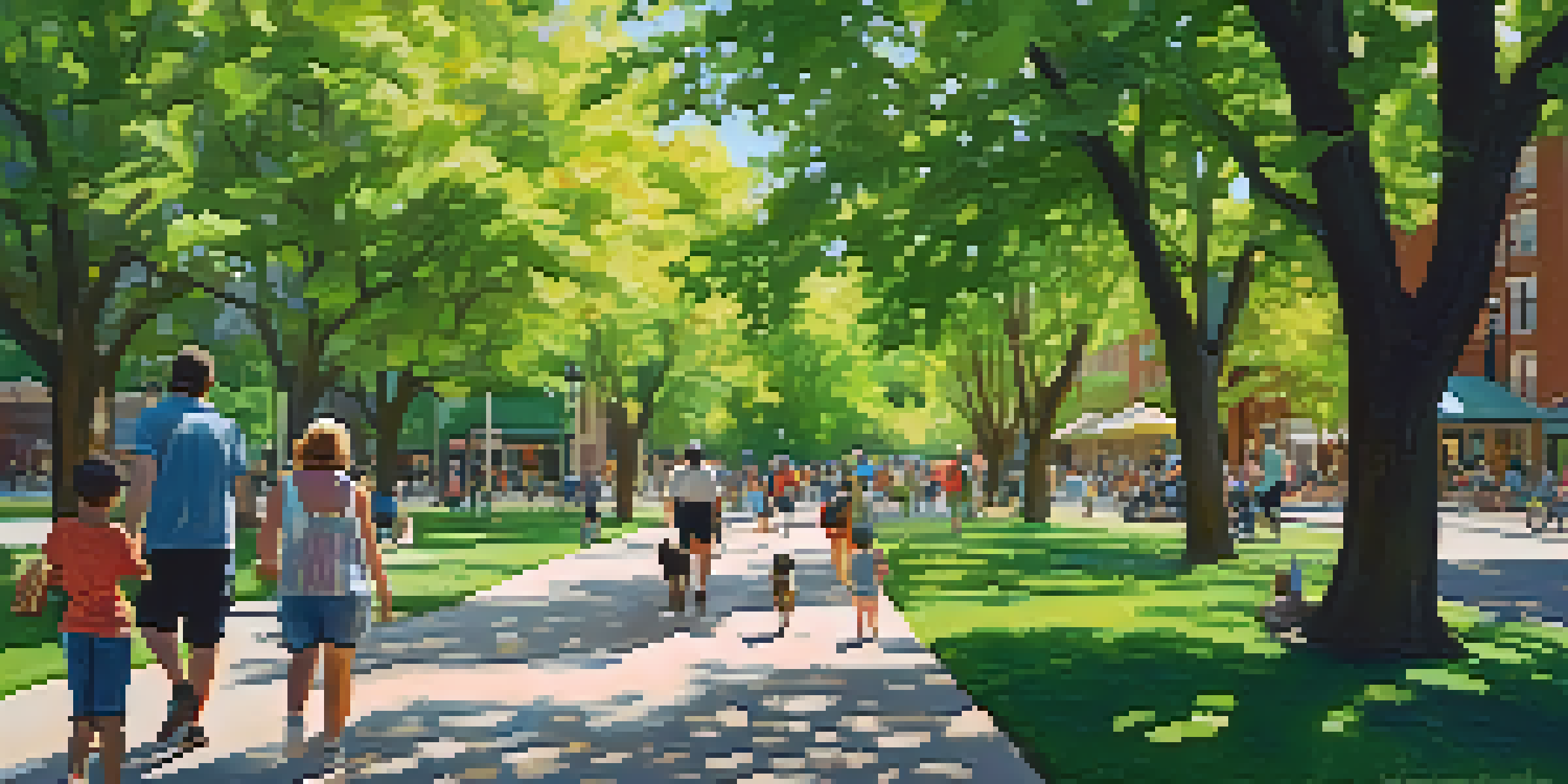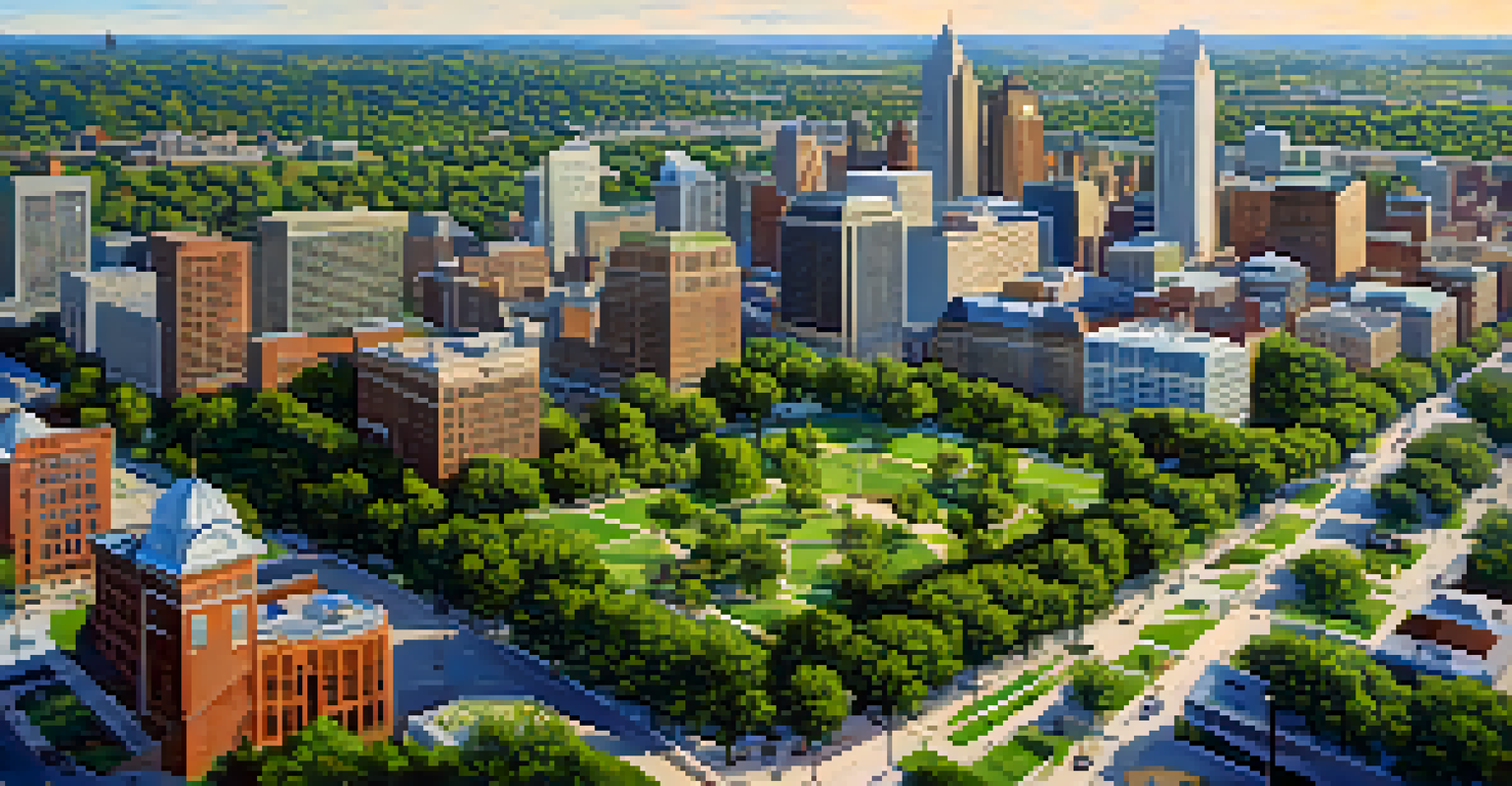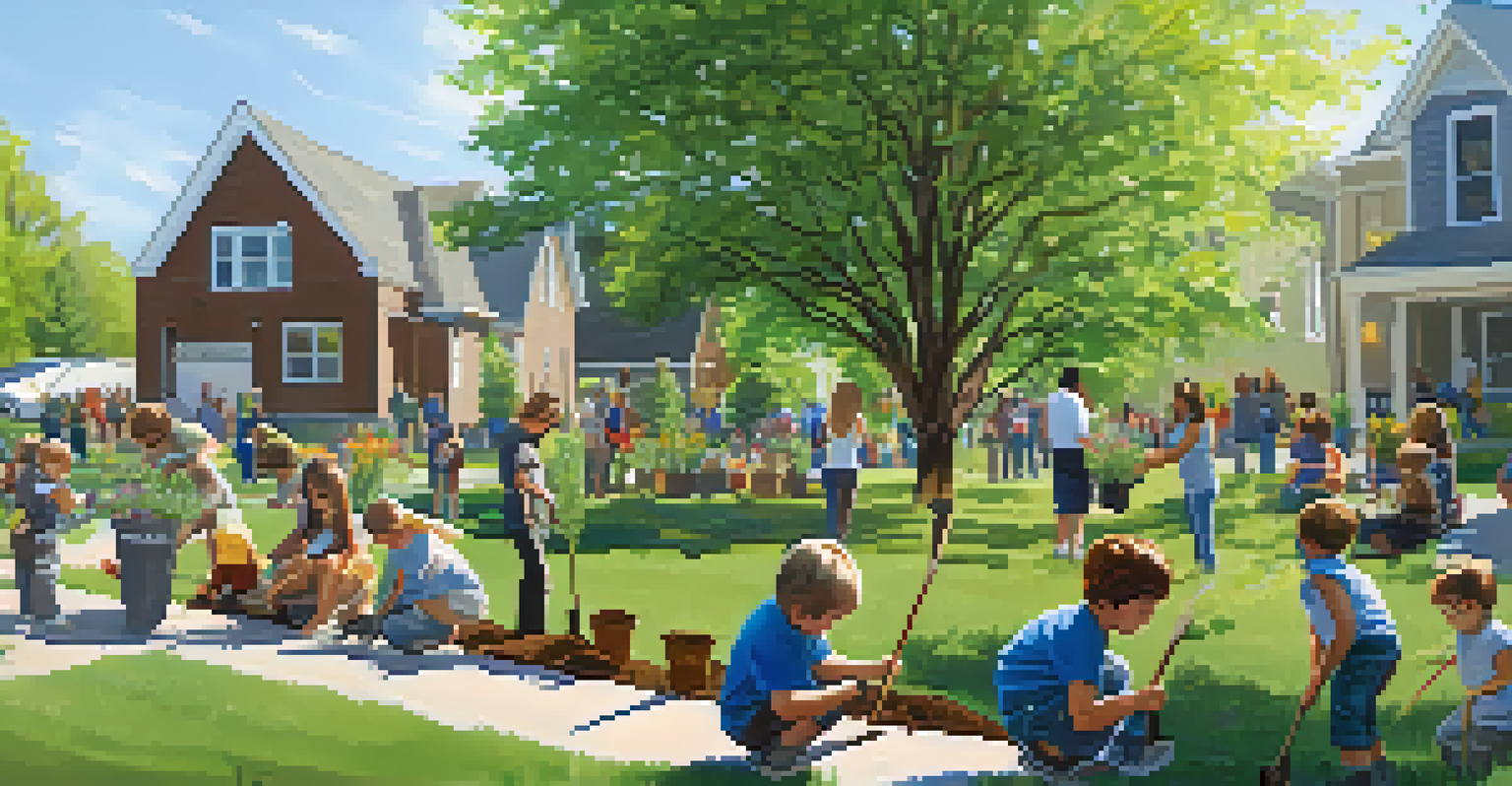Kansas City's Urban Forest Management and Sustainability

Understanding Urban Forest Management in Kansas City
Urban forest management in Kansas City involves the planning and care of trees and green spaces within the city. This initiative aims to improve environmental quality, enhance aesthetics, and support biodiversity. With a blend of city officials, community groups, and citizens, the effort is collaborative and community-focused.
The best time to plant a tree was twenty years ago. The second best time is now.
The city recognizes that trees play a pivotal role in urban ecosystems, providing shade, improving air quality, and contributing to residents' mental well-being. Data-driven strategies are employed to assess tree health and species diversity, ensuring that the urban canopy is vibrant and resilient. Kansas City’s approach emphasizes not just planting trees but also maintaining and protecting existing ones.
To maximize the benefits of urban forests, Kansas City engages in public education campaigns. These initiatives aim to raise awareness about the importance of trees, encouraging residents to take an active role in local tree care. By fostering a culture of stewardship, the city hopes to ensure the longevity and health of its urban forest.
The Role of Sustainability in Urban Forest Management
Sustainability is at the heart of Kansas City's urban forest management practices. The city's strategies are designed to ensure that the forest can thrive for generations to come, balancing ecological, social, and economic needs. This means using resources wisely and considering the long-term impacts of tree planting and maintenance.

One of the key sustainability practices is selecting native tree species that are well-adapted to the local climate and soil conditions. This not only reduces maintenance costs but also enhances biodiversity, as native species support local wildlife better than non-native alternatives. By focusing on native trees, Kansas City is fostering a resilient ecosystem that can withstand environmental changes.
Kansas City's Urban Forest Strategy
Kansas City emphasizes a collaborative approach to urban forest management, focusing on tree health, biodiversity, and community involvement.
Additionally, sustainability efforts include implementing green infrastructure practices, such as planting trees in conjunction with permeable pavements and rain gardens. These features help manage stormwater runoff, reduce urban heat, and improve overall urban resilience. Such integrated approaches illustrate how Kansas City is leading the way in sustainable urban forestry.
Community Involvement in Urban Forestry Initiatives
Community involvement is crucial for the success of Kansas City's urban forestry initiatives. Local residents are encouraged to participate in tree planting events, educational workshops, and ongoing care projects. This not only empowers citizens but also fosters a deep connection between the community and its green spaces.
Trees are the earth's endless effort to speak to the listening heaven.
Various organizations and volunteer groups play an essential role in enhancing the urban forest. For example, programs like 'TreeKeepers' train volunteers to care for trees in their neighborhoods, promoting a sense of ownership and responsibility. These grassroots efforts create a network of engaged citizens who advocate for tree preservation and sustainability.
Furthermore, the city actively seeks feedback from the community regarding urban forestry plans. Public forums and surveys allow residents to voice their opinions and contribute ideas, ensuring that the management strategies reflect the community's needs and desires. This collaborative approach strengthens the bond between Kansas City’s citizens and their urban forest.
Challenges Facing Kansas City's Urban Forest
Despite the proactive measures taken, Kansas City's urban forest faces several challenges. One significant issue is the impact of climate change, which can lead to increased pests, diseases, and extreme weather events. These factors pose a threat to the health and survival of urban trees, necessitating adaptive management strategies.
Another challenge involves urban development, which can often result in tree loss due to construction and land clearing. Balancing the need for growth with the preservation of green spaces is a delicate task. Kansas City must navigate these competing interests while advocating for policies that protect the urban canopy.
Sustainability Drives Urban Forestry
The city's commitment to sustainability includes using native tree species and green infrastructure to enhance ecological resilience.
Moreover, funding for urban forestry programs can be limited, impacting the ability to maintain existing trees and plant new ones. The city is continually seeking innovative funding solutions, including grants and partnerships with local businesses. Addressing these challenges is crucial for the sustainability of Kansas City's urban forest.
The Economic Benefits of Urban Forests
Urban forests contribute significantly to the economy of Kansas City, offering a range of benefits that extend beyond environmental health. For instance, research shows that areas with more trees tend to have higher property values. A well-maintained urban forest can make neighborhoods more attractive to potential homebuyers and investors alike.
Trees also play a role in reducing energy costs by providing shade and cooling during the hot summer months. This natural cooling effect can lower air conditioning expenses for residents and businesses, leading to significant savings over time. Moreover, urban forests can help mitigate stormwater runoff, reducing the costs associated with flood management.
Additionally, urban forests create jobs in tree care, landscaping, and environmental education. By investing in the urban canopy, Kansas City not only enhances its livability but also stimulates economic growth and job creation. The multifaceted economic advantages of urban forests highlight their importance in city planning and development.
Innovative Technologies in Urban Forest Management
Kansas City is embracing innovative technologies to enhance its urban forest management practices. Geographic Information Systems (GIS) are being utilized to map and analyze tree populations across the city. This data-driven approach helps city planners make informed decisions about where to plant new trees and how to prioritize maintenance efforts.
Additionally, remote sensing technology, such as drones, is being explored for monitoring tree health and assessing canopy cover. These advanced tools allow for more efficient and accurate evaluations, ultimately leading to better management strategies. By leveraging technology, Kansas City can respond more effectively to the needs of its urban forest.
Community Engagement is Key
Active community participation in tree care initiatives fosters a strong connection between residents and their urban green spaces.
Moreover, the city is developing mobile applications to engage residents in tree care. These apps provide information on local tree species, care tips, and opportunities for volunteering. By making urban forestry more accessible and interactive, Kansas City is fostering a community that is better informed and more involved in sustaining its urban forest.
Looking Ahead: The Future of Kansas City's Urban Forest
The future of Kansas City's urban forest is bright, with ongoing efforts to expand and enhance green spaces throughout the city. The urban forestry plan includes ambitious goals for increasing tree canopy coverage, improving species diversity, and enhancing community engagement. These steps aim to create a healthier, more resilient urban environment for all residents.
As climate change continues to pose challenges, Kansas City is committed to adopting adaptive management practices that build resilience within its urban forest. This includes focusing on planting climate-adaptive tree species and investing in infrastructure that supports tree health amidst changing environmental conditions.

Ultimately, the vision for Kansas City’s urban forest is one of collaboration and sustainability. By bringing together government, community organizations, and residents, the city aims to create a thriving urban canopy that not only beautifies the landscape but also contributes to the overall well-being of its citizens.